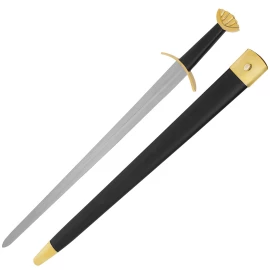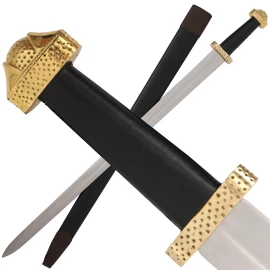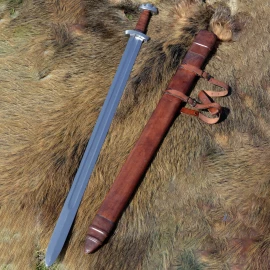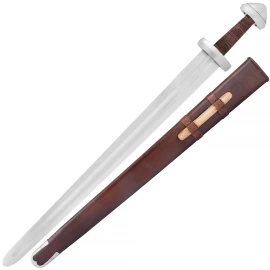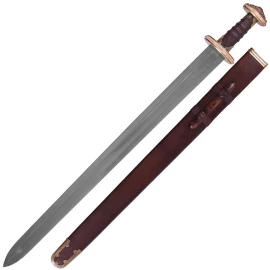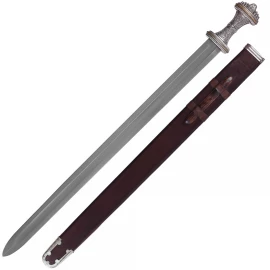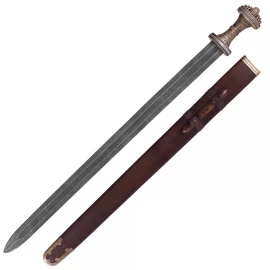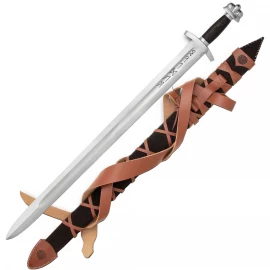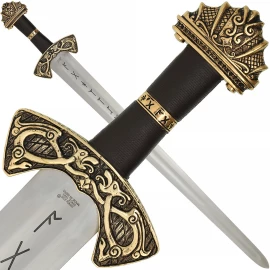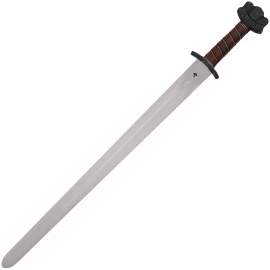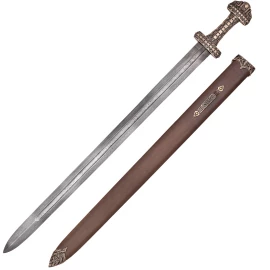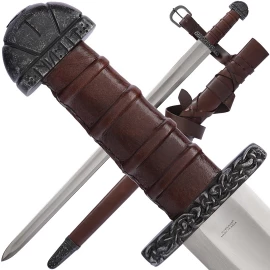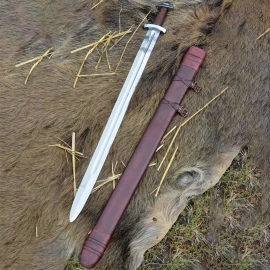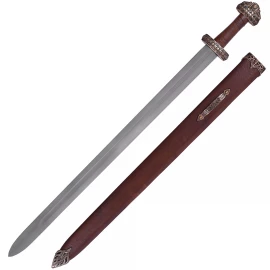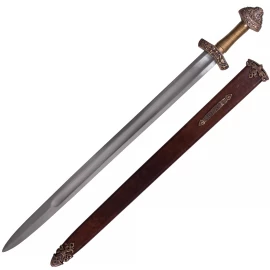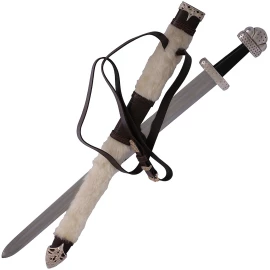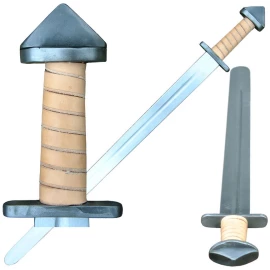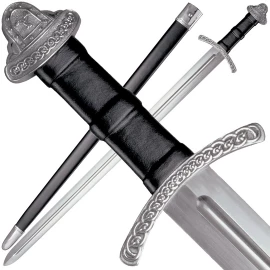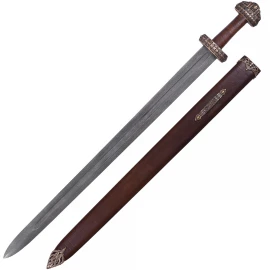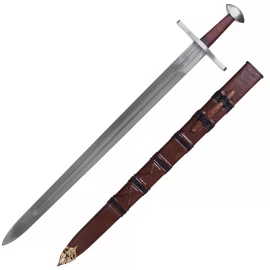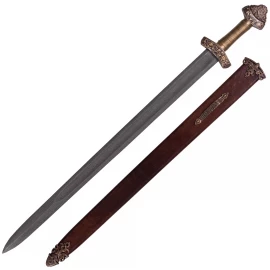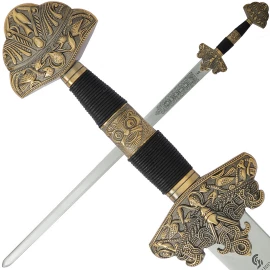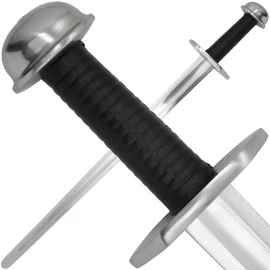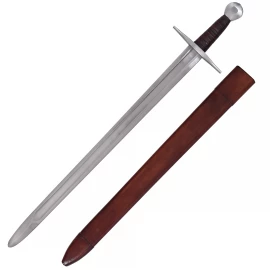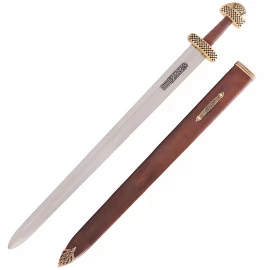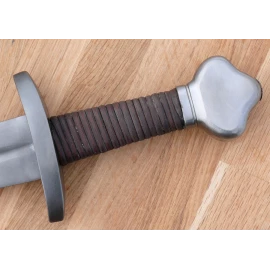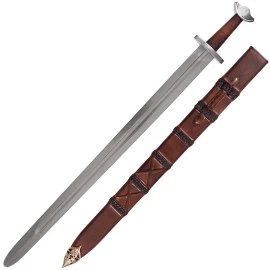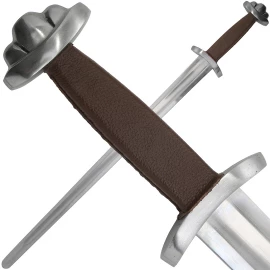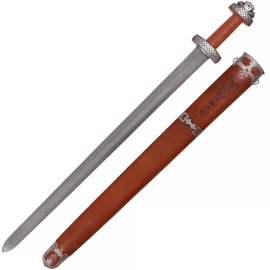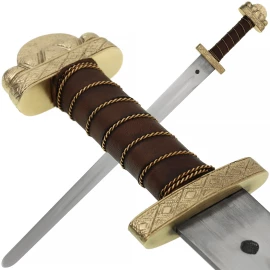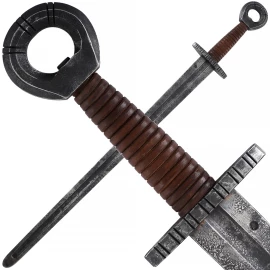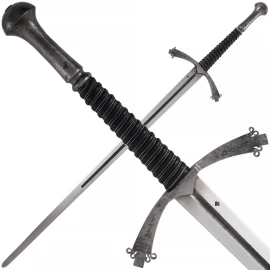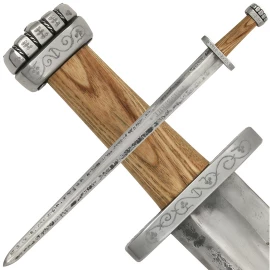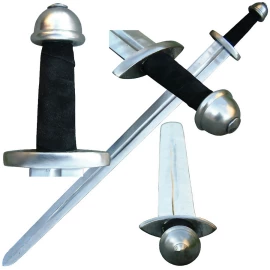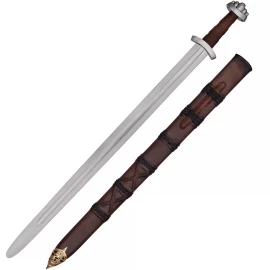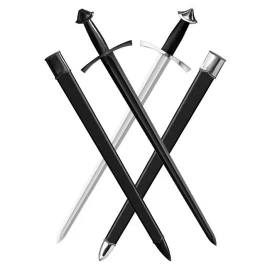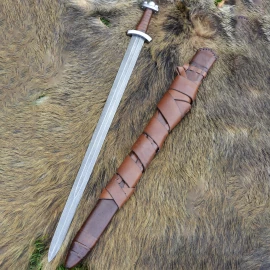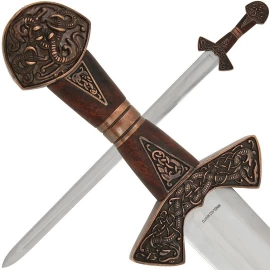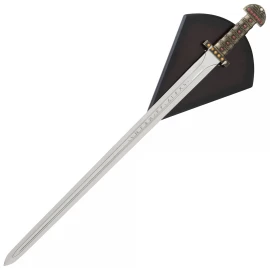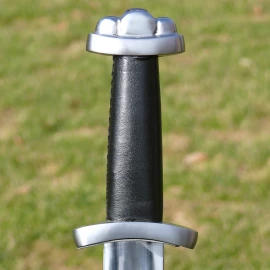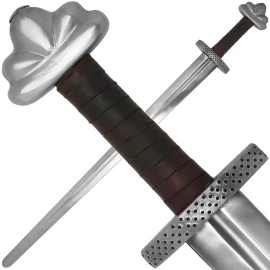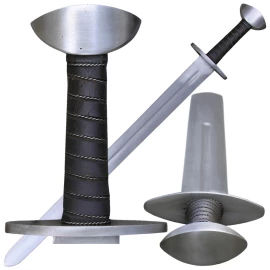Knightly Sword with Five-Lobe Pommel, 13th-14th Century, including Scabbard - Outlet
Are you looking for a classic knightly sword to perfectly complement your costume for re-enactment or LARP? This sword, inspired by weapons of the 13th and 14th centuries, is an excellent choice. Its most striking feature is the elegant five-lobe pommel, which was popular in its time and often symbolised the five wounds of Christ. The sword features a carbon steel blade with a polished finish and an edge thickness of approx. 2 mm, making it ideal for decoration and for wearing at your belt. The grip is wrapped in black leatherette for a comfortable hold. It also comes with a practical imitation leather scabbard featuring an interesting criss-cross pattern, so it's ready to join you on your adventures right away. Further product information ...
Knightly Sword with Five-Lobe Pommel, 13th-14th Century, including Scabbard
A Faithful Replica from the High Middle Ages
This type of sword, often referred to as a "knightly sword," was typical for knights of the High Middle Ages. The design, with its straight crossguard and distinctive pommel, was widespread throughout Europe, especially in Western and Central Europe. The five-lobe (or "fluted") pommel is not just an aesthetic element; it served as a counterbalance to the blade, giving the sword better balance and manoeuvrability. The long, straight, double-edged blade was designed for both powerful cuts and precise thrusts.
Although these swords were primarily deadly weapons in battle, they often also represented the status of their owner. Today, this sword is the ideal choice for anyone wishing to portray a knight at historical festivals, LARP events, or as an impressive decorative piece for your collection.
Technical Specifications
| Overall Length: | approx. 96.5 cm (38 inches) |
| Blade Material: | Carbon Steel |
| Pommel Material: | Cast Steel |
| Edge Thickness: | approx. 2 mm |
| Grip: | Wrapped in black leatherette |
| Weight of Sword: | approx. 1234 g (2.72 lbs) |
| Scabbard: | Included (imitation leather) |
| Weight of Scabbard: | approx. 508 g (1.12 lbs) |
Important Notice: Class C
This sword is intended for decorative purposes and for wearing with a costume (re-enactment). The edge thickness is approx. 2 mm. It is not a weapon designed for contact fencing.
It falls into Class C of the Classification of Battle-Ready Weapons. This is a product without warranty. You can find out more here: Classification of Battle-Ready Weapons.
Caring for Your New Sword
To ensure you enjoy this sword for as long as possible, it needs proper care. The carbon steel blade is susceptible to rust.
- Wipe the blade with a dry cloth after each use (even after just handling it).
- Regularly coat it with a thin layer of oil (e.g., WD-40 or a specialised gun/blade conservation oil).
- Store the sword in a dry place. Do not leave it in the leather scabbard for long periods, as it can retain moisture.
- The blade is not intended for chopping hard objects (wood, bones) or for contact fencing. Doing so could damage or break it.
Complete Your Knightly Look
A perfect knightly costume includes not only a sword but also the means to carry it. We recommend getting a quality leather belt (e.g., SKU 19211 or 19006) and a suitable sword frog (SKU 23156, 23157, or 12025) so your sword hangs at your hip just as it should. Don't forget a period-appropriate tunic or surcoat to perfect your appearance.
We are here for you!









